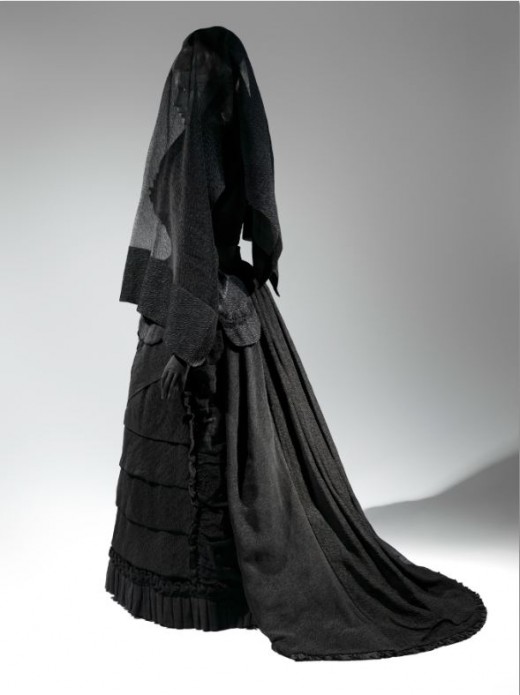Death Becomes Her: A Century of Mourning Attire
October 21, 2014-February 1, 2015
The Metropolitan Museum of Art
Anna Wintour Costume Center
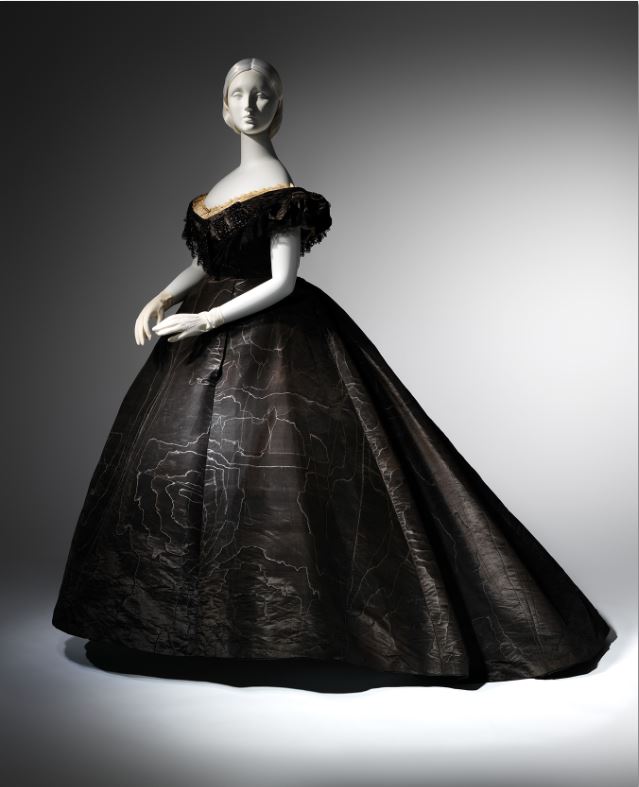
Lent by Roy Langford
(C.I.L.37.1a)
Photo: © The Metropolitan Museum of Art, by Karin L. Willis
As a native New Yorker who’s DNA has been imprinted with the “adoration of black clothes” gene, this upcoming exhibition targets my love of fashion in one of my favorite colors (I know it’s not a color) !
Death Becomes Her: A Century of Mourning Attire, The Costume Institute’s first fall exhibition in seven years, will be on view in The Metropolitan Museum of Art’s Anna Wintour Costume Center from October 21, 2014 through February 1, 2015. The exhibition will explore the aesthetic development and cultural implications of mourning fashions of the 19th and early 20th centuries.
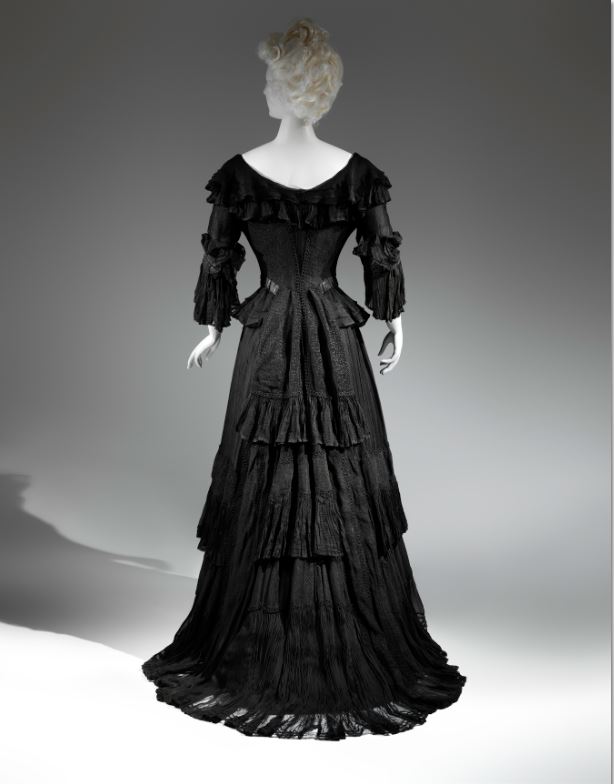
Black silk crape, black chiffon, black taffeta
The Metropolitan Museum of Art, Gift of The New York Historical Society, 1979
(1979.346.93b, c)
Photo: © The Metropolitan Museum of Art, by Karin L. Willis
Approximately 30 ensembles, many of which are being exhibited for the first time, will reveal the impact of high-fashion standards on the sartorial dictates of bereavement rituals as they evolved over a century.
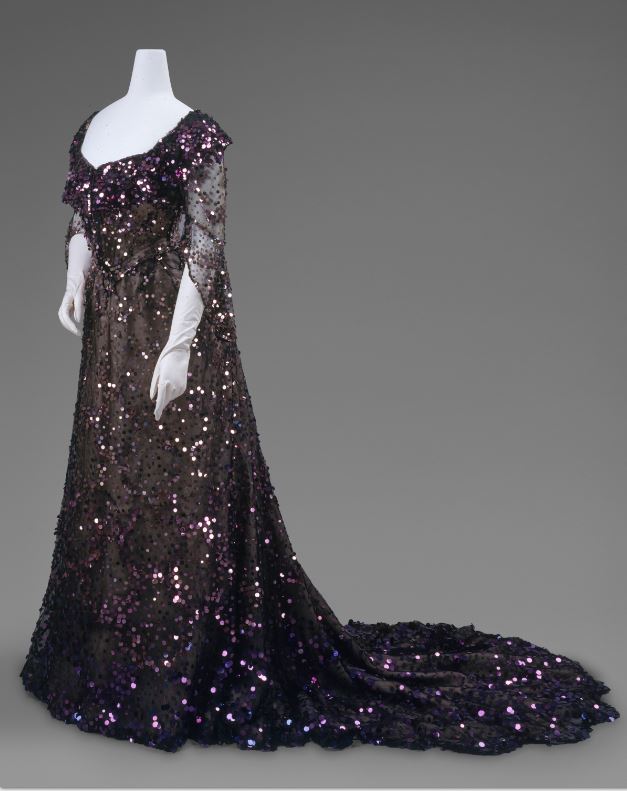
Worn by Queen Alexandra (British, born Denmark, 1844–1925)
Black silk tulle, mauve silk chiffon, purple sequins
The Metropolitan Museum of Art, Gift of Miss Irene Lewisohn, 1937
(C.I. 37.44.2a, b)
Photo: © The Metropolitan Museum of Art, by Karin L. Willis
“The predominantly black palette of mourning dramatizes the evolution of period silhouettes and the increasing absorption of fashion ideals into this most codified of etiquettes,” said Harold Koda, Curator in Charge of The Costume Institute, who is curating the exhibition with Jessica Regan, Assistant Curator. “The veiled widow could elicit sympathy as well as predatory male advances. As a woman of sexual experience without marital constraints, she was often imagined as a potential threat to the social order.”
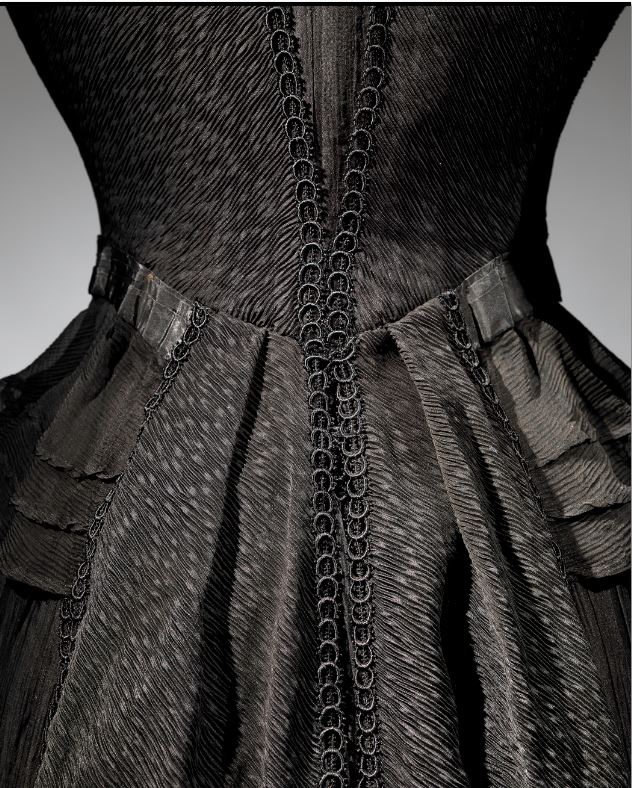
Black silk crape, black chiffon, black taffeta
The Metropolitan Museum of Art, Gift of The New York Historical Society, 1979; (1979.346.93b, c)
Photo: © The Metropolitan Museum of Art, by Karin L. Willis
Exhibition Overview
The thematic exhibition will be organized chronologically and feature mourning dress from 1815 to 1915, primarily from The Costume Institute’s collection. The calendar of bereavement’s evolution and cultural implications will be illuminated through women’s clothing and accessories, showing the progression of appropriate fabrics from mourning crape to corded silks, and the later introduction of color with shades of gray and mauve.
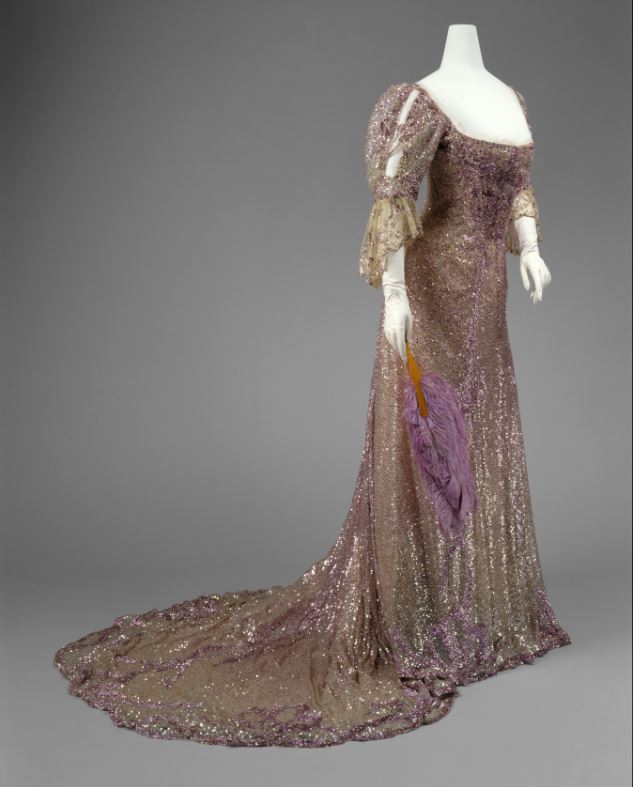
Evening Dress, 1902
Worn by Queen Alexandra (British, born Denmark, 1844–1925)
Mauve silk tulle, sequins
The Metropolitan Museum of Art, Gift of Miss Irene Lewisohn, 1937
(C.I. 37.44.1)
Photo: © The Metropolitan Museum of Art, by Karin L. Willis
“Elaborate standards of mourning set by royalty spread across class lines via fashion magazines,” said Ms. Regan, “and the prescribed clothing was readily available for purchase through mourning ‘warehouses’ that proliferated in European and American cities by mid-century.”
The Anna Wintour Costume Center’s Carl and Iris Barrel Apfel Gallery will orient visitors to the exhibition with fashion plates, jewelry, and accessories. The main Lizzie and Jonathan Tisch Gallery will illustrate the evolution of mourning wear through high fashion silhouettes and will include mourning gowns worn by Queen Victoria and Queen Alexandra. Examples of restrained simplicity will be shown alongside those with ostentatious ornamentation. The predominantly black clothes will be set off within a stark white space and amplified with historic photographs and daguerreotypes.
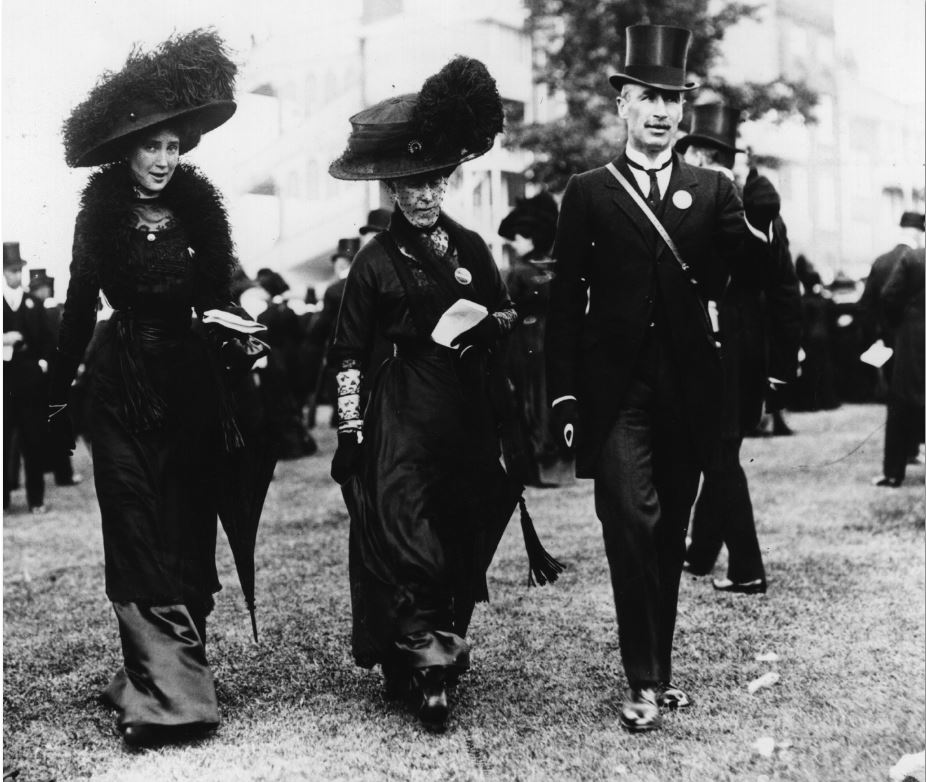
Courtesy of The Metropolitan Museum of Art, Getty Images
The Museum’s website, www.metmuseum.org/deathbecomesher, will feature information on the exhibition and related programs.
You can follow on Facebook.com/metmuseum, Instagram.com/metmuseum, and Twitter.com/metmuseum.
To join the conversation about the exhibition use #DeathBecomesHer on Instagram and Twitter.
